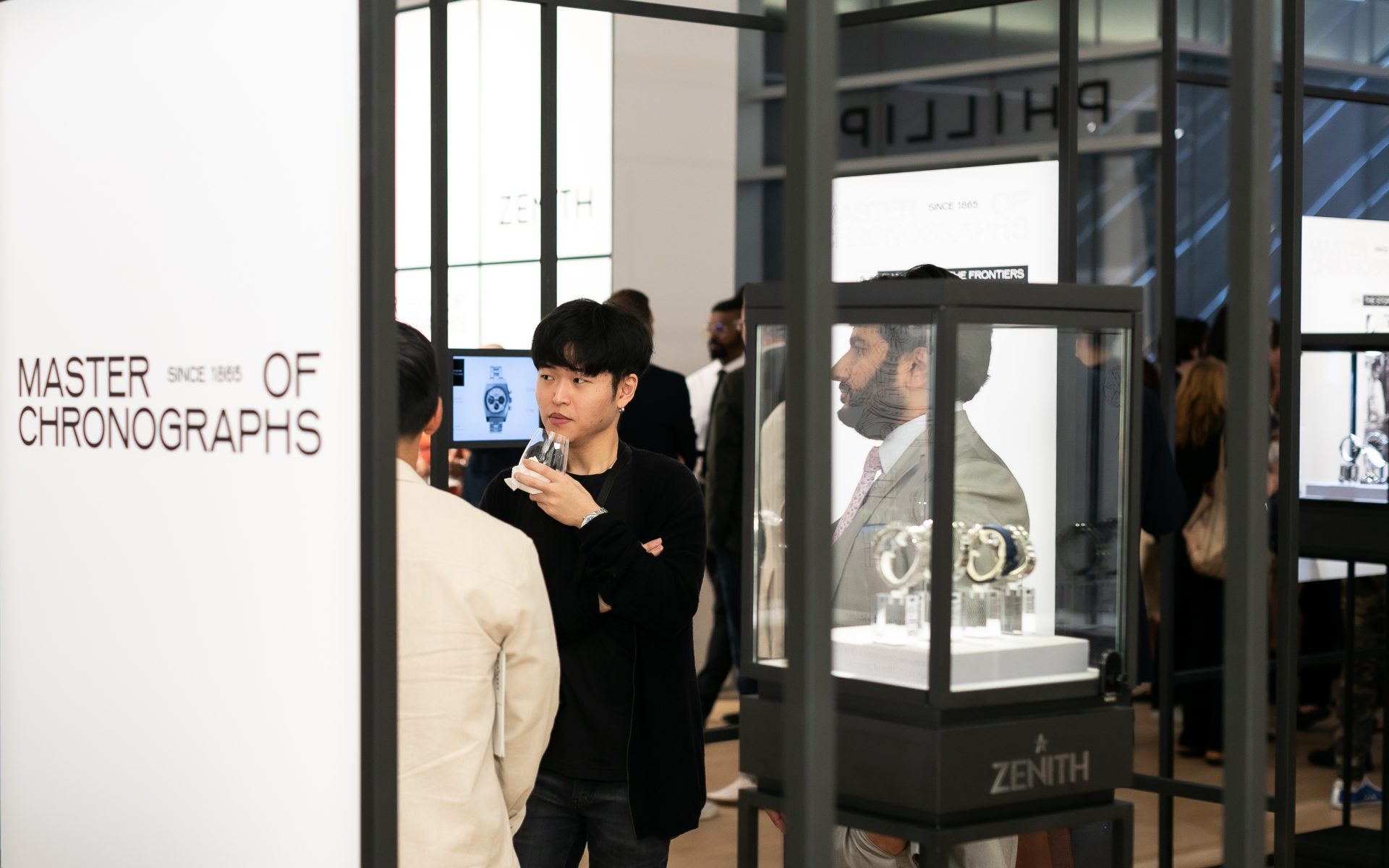Zenith’s “Master of Chronographs” exhibition, which took place in the middle of June at the Phillips auction house in New York, traced the brands roots as a maker of chronograph movements – starting from 1865.
The date is a revelation even for those of us who are familiar with the brand and its merits.
The year 1969 is what mostly comes to mind when we think of Zenith’s heritage, when the first El Primero chronograph rolled off the production line and made its way into the Swiss watchmaking hall of fame – though not right away; the quartz era was about to happen, and as we know, the El Primero was shelved in an attic for more than a decade before being rediscovered.
The exhibition walked us through the brand’s trajectory as a maker of chronographs and other complications, begins with archival pieces, including pocket watches and professional chronographs, progressed to iconic examples of the El Primero, and culminated in current state-of-the-art versions of the high-frequency movement, with 1/10th of a second and 1/100th of a second functions.
The exhibition revealed the extent of its authenticity as one of Switzerland’s elite heritage brands, one that served as a supplier of components to other luxury brands, including Ebel and Rolex (Zenith made the movements for Rolex Daytonas from 1988 to 2000).
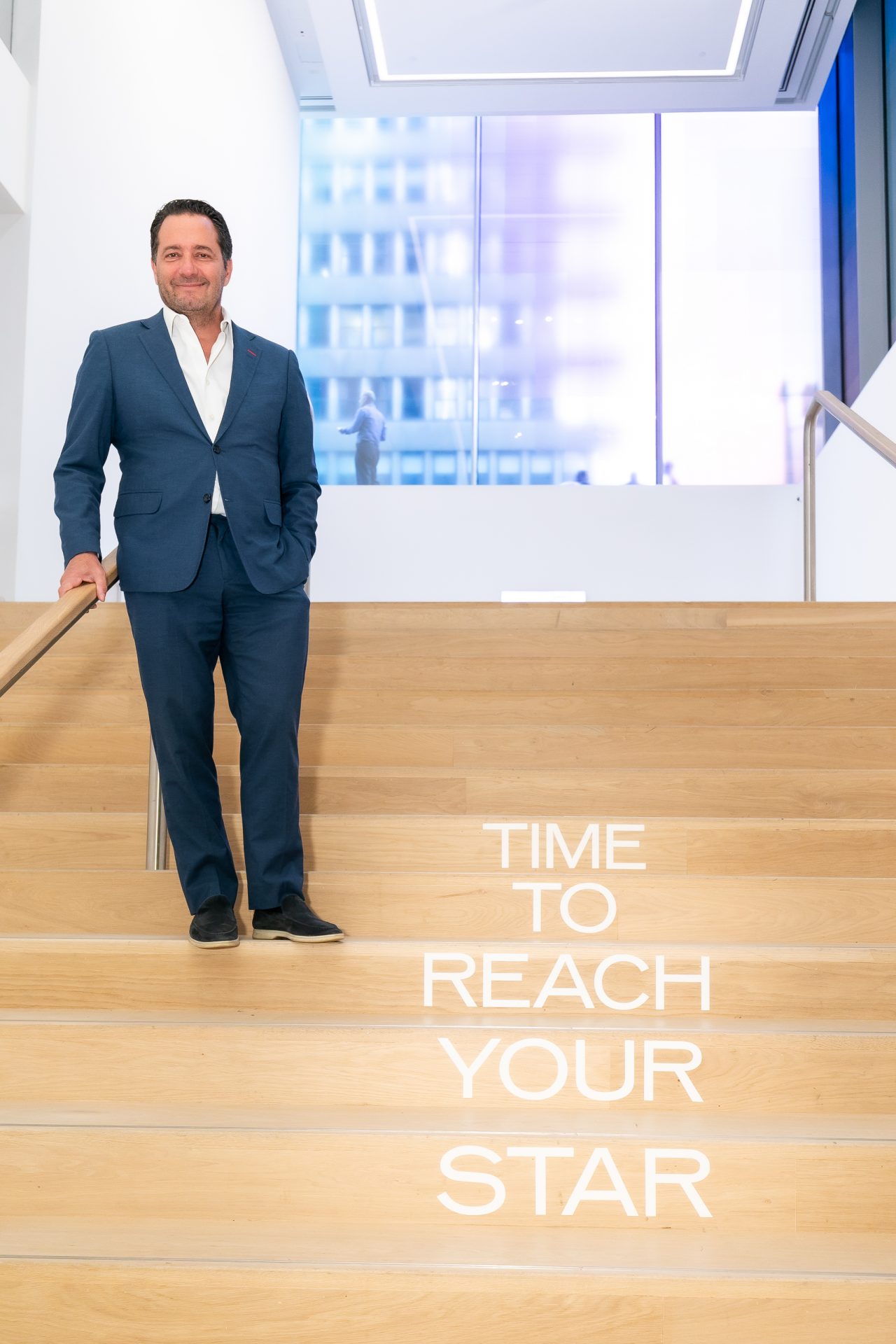
“We wanted to recap the history of Zenith’s chronographs because it started a lot earlier than 1969, and many people don’t know that,” says CEO Julien Tornare. “The company has been working on chronographs and precision chronometers since the late 19th century, and we want to remind people of that.”
Mr Tornare says the exhibit is part of his effort to reinterpret the brand with a greater focus on heritage. Like many Swiss watch companies in the aftermath of the post-quartz era, Zenith lost its way for a few years.
“In my first meeting with the board of directors of Zenith in 2017 [following a 17-year career as an executive at Vacheron Constantin], I told them very frankly, I can do things very fast, but it’s not going to last long. Or you give me a bit of time. You let me build the brand properly and we’ll do something that will last forever.’ And they said, don’t look immediately at the numbers. Create a vision, and develop it.”
That vision was based on bringing back the true Zenith.
“I’m not going to give names, but under the leadership of some of my predecessors, you know, at one point it was going crazy, with big parties, and crazy open heart models, and watches that sometimes went too far. And then suddenly there was a very classic approach. In both cases, some good things were done for the brand, but the direction was so different, that people got confused.” Mr Tonare recalls.
“When I came on board, I decided we would build and respect the heritage, and stay very authentic, while expressing that identity in a modern way. I want to hold the balance between past, present and future – tradition and innovation.”
One of the first things Mr Tornare did after being brought on board was to fix the website.
“It was not even responsive; you couldn’t use it on a mobile device. It hadn’t been touched for years. So I spent CHF 80,000 (about $82,000) on that. We also changed the packaging, and we made staff changes. Now we have the right people in each market. In the U.S., it’s growing so fast that we are set to hire more people – 2021 was a record year. In 2022, we are already ahead of last year’s sales by 52%.”
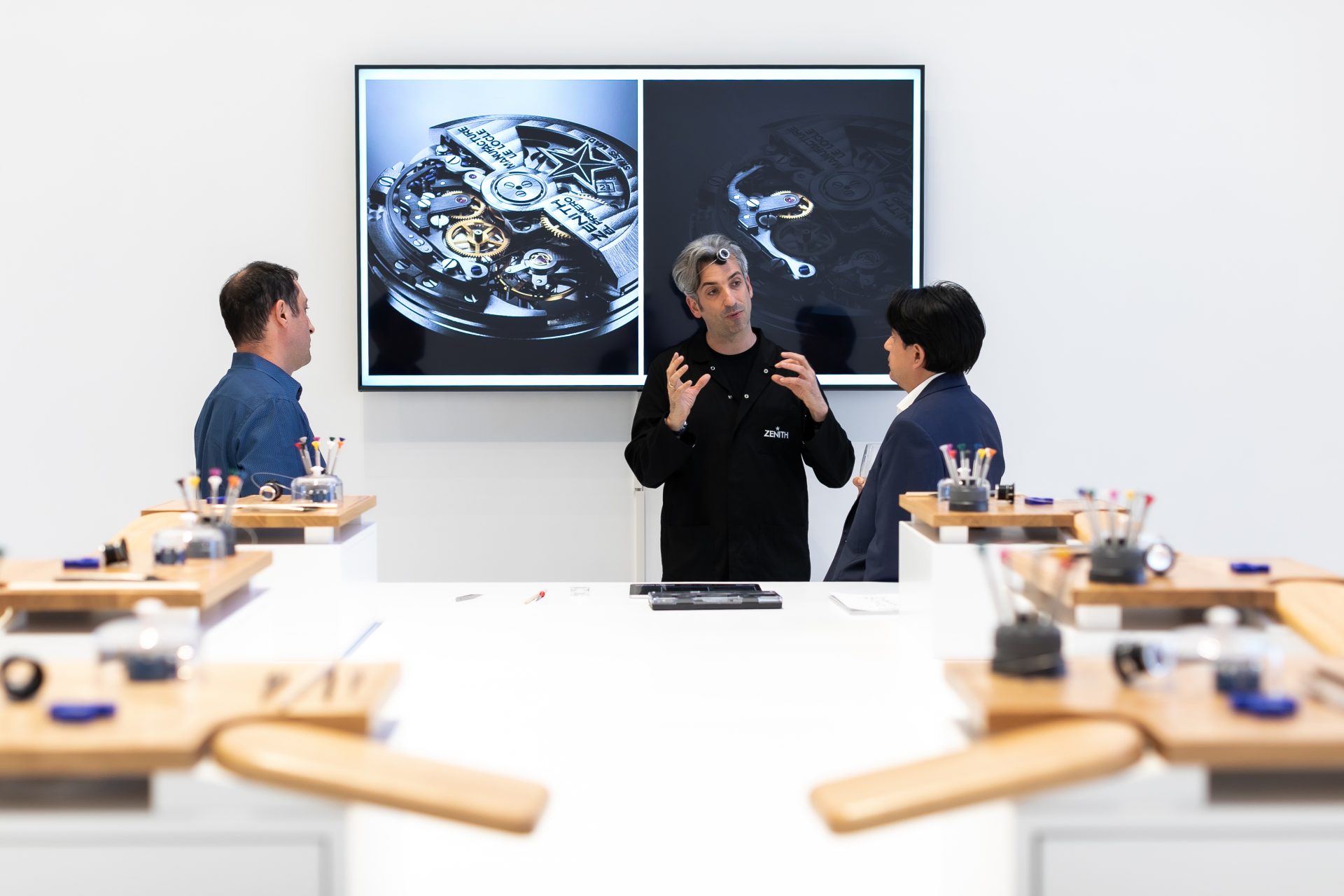
Despite the boom, Mr Tornare says he is building the brand slowly, and he really has no choice.
“One rule we will stick to is that 100% of our watches will be equipped with Zenith movements, which is very rare in the watch industry – there are four, maybe five brands today that can say that,” he states.
“If tomorrow I went to Sellita or ETA and bought external movements, I could do 10,000 more tomorrow morning. But if we’re using all Zenith movements, it takes more time.”
Last year, the company made 20,000 watches, and hopes to end this year with production at 23,000. “At one point in our past, when we were supplying many other companies with movements, we were making some 200,000 movements a year. Can you believe it? So I know we have the capacity, it just takes a while,” Mr Tornare describes.
Given the production restraints, it’s not surprising that Zenith’s plan will include a slow roll out of monobrand boutiques.
“There will be maybe three or four in the US over the next few years, but we’re in no rush,” he says.
“We’ll look for the right location, the right opportunity. In the meantime, we have great partners. Our retailers are doing a fantastic job. I’m not in line with brands that want to go to 100% boutiques. We aren’t selling t-shirts, and at some point you need to have neutral advice. If you go next door [to Cellini in New York City], and say you want to buy a nice chronograph, they are going to put five on the tray – hopefully including a Zenith – and say, these are all beautiful chronographs. And then you have the choice. If you go to a monobrand boutique, obviously people are paid to tell you this is the best brand of the world. I think many end clients are still looking for neutral advice.”
To drive home the legacy of Zenith’s heritage, Mr Tornare recently brought one of the brand’s chronometer movements back to life.
His team uncovered several vintage chronometer movements (caliber 135-O) at the manufacture in Le Locle, Switzerland, that had been made especially for observatory competitions in the 1950s, which are judged without cases.
“We made the movement in 1949, and from 1950 until 1954, and it won the top chronometry prize five years in a row. We were the only ones to have done that, and it’s never been done since,” says Mr Tornare.
To bring them back to life and put them in cases, he enlisted the help of star independent watchmaker and chronometer restoration expert Kari Voutilainen, and together they produced a limited edition of 11 watches, one of which will be auctioned for charity in November by Phillips in Association with Bacs & Russo.
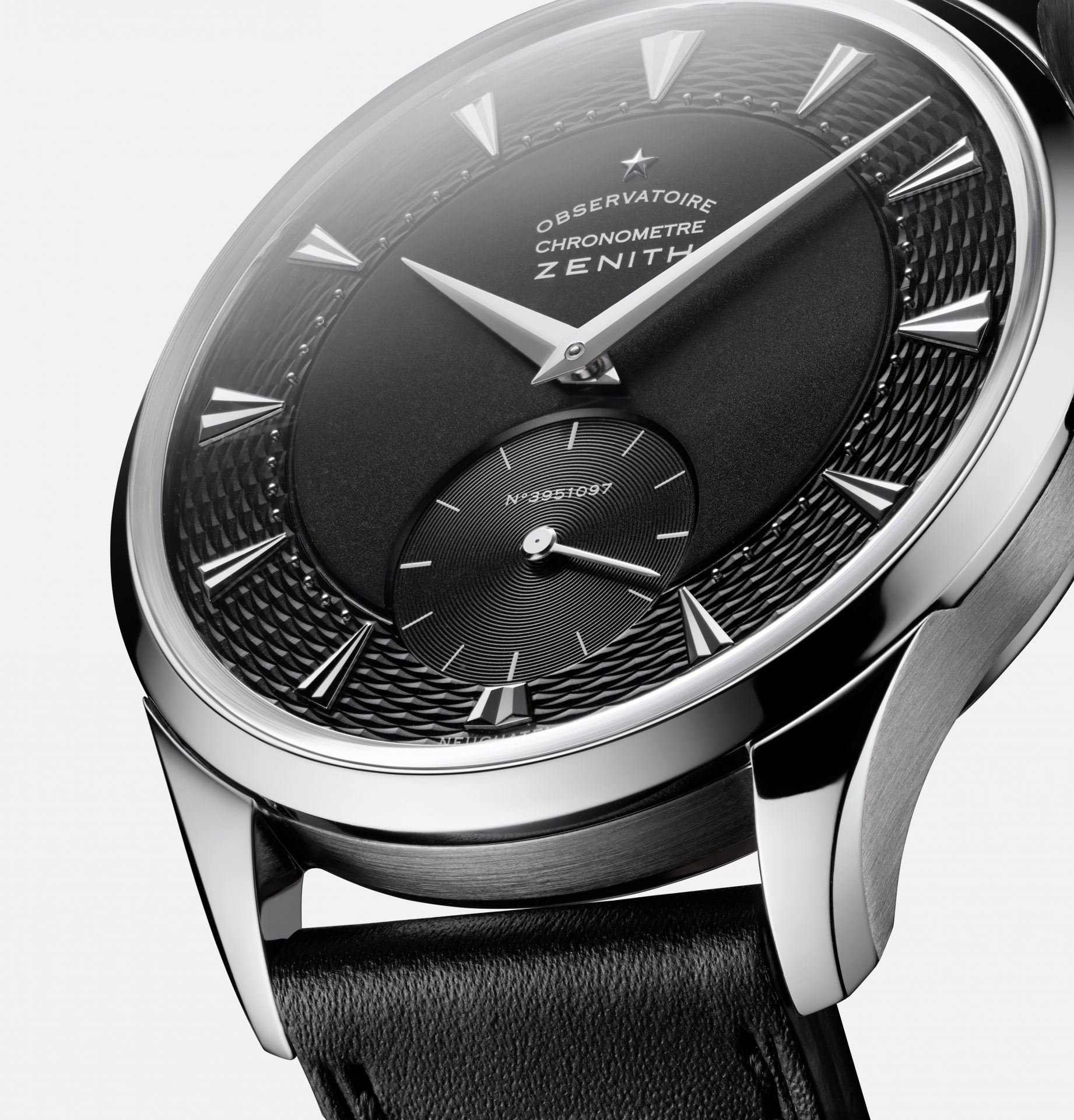
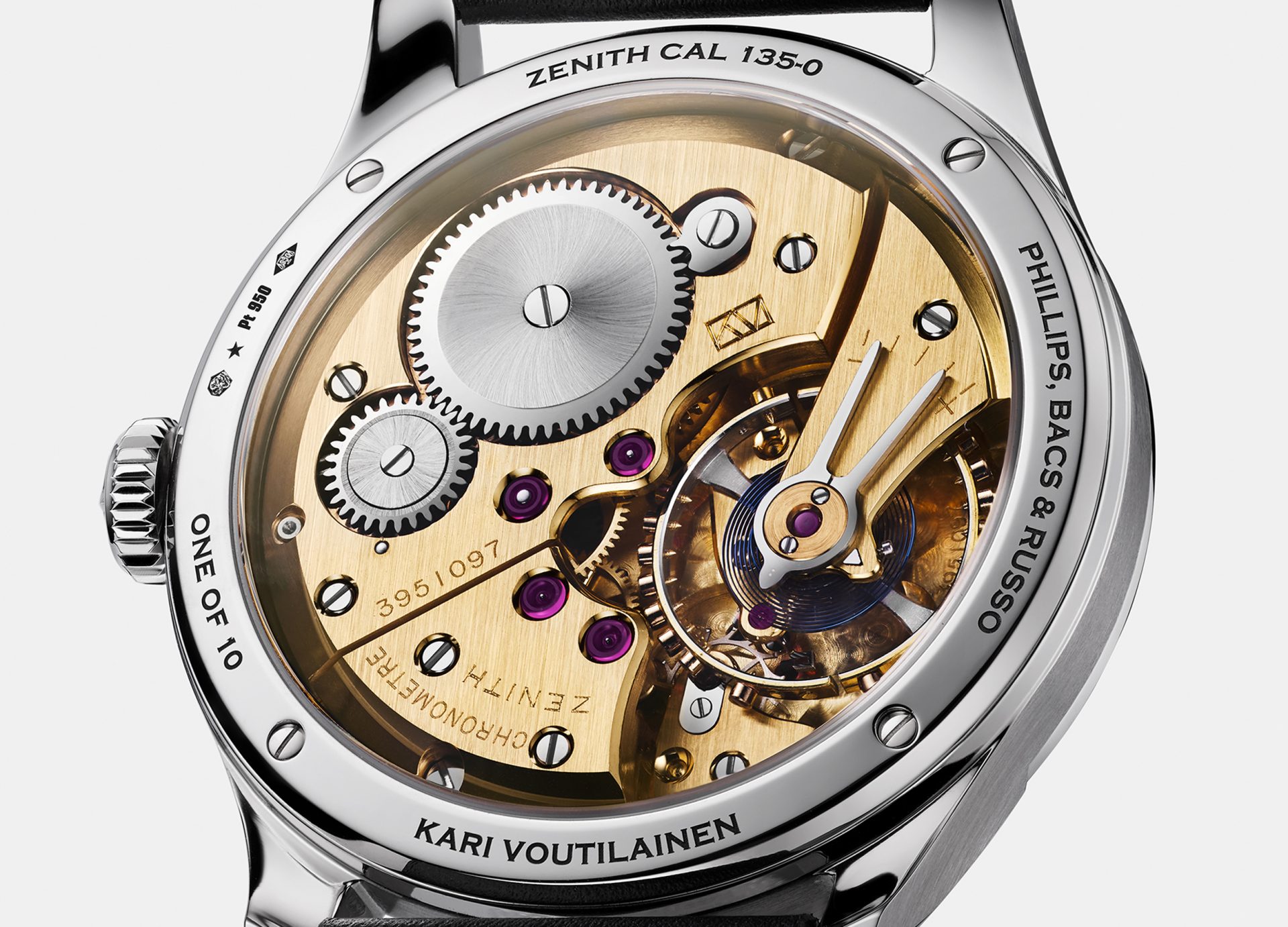
“My first choice for restoring the movements was Kari, so we went to him and shared this treasure we had,” recounts Mr Tornare.
“I thought he would be too busy – his watches are already pre-sold through 2028 – so I was expecting a ‘no.’ But he liked the project so much, he said, listen, if it’s just 11 watches, I can do it. We introduced them at a private event in Geneva, and our phone started ringing – within an hour and a half, they were all sold. These 10 people, they know they have something that nobody else can have and nobody will ever have.”
The brand’s next introduction will be something in the Defy collection, which Mr Tornare says represents the future of the brand – it holds the most advanced El Primero movement, the 21, which displays time to 1-100th of a second.
“It will be something sporty and bulky,” he says. “That’s the kind of watch it is.”
After that comes another nod to the brand’s heritage: a Pilot watch. Zenith’s Pilot model has been produced in some form since 1904, and set the design architecture for pilot’s watches of that and subsequent eras.”
“It’s time we came out with a contemporary version of that part of our heritage,” says Mr Tornare.
Stay tuned.

